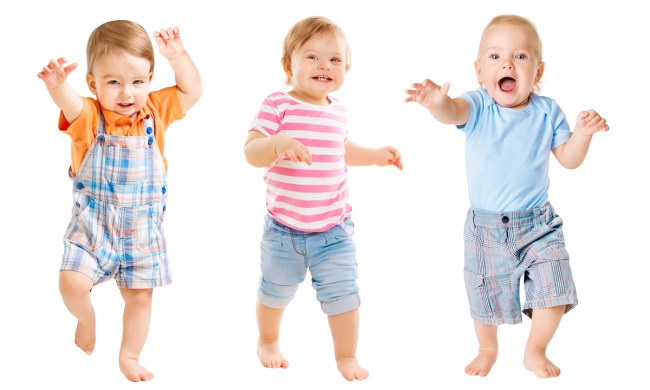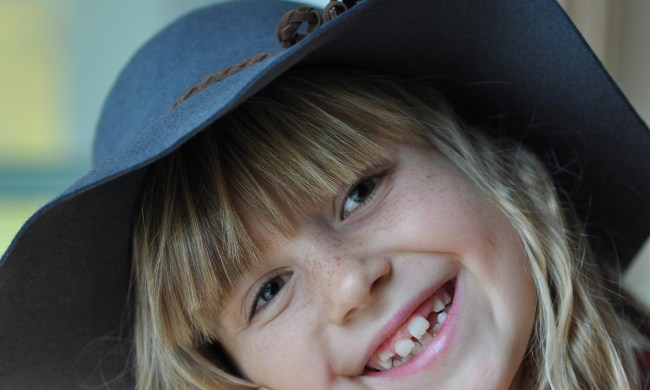White lies, little fibs, mini mistruths. We are all guilty of lying from time to time — whether it’s to protect a friend’s feelings, spare ourselves an inconvenience, or get out of a dicey situation. No biggie, right?
But when our kids begin to lie, we may rethink the harmlessness of telling any falsity. We want our children to be upstanding, honest, and authentic; we need them to understand the importance of words and actions, and intentions. So what should you do when your little one suddenly starts spouting deceptions? Read on for our top tips on how to deal with a lying child.

Why do kids lie?
Just like adults lying for all sorts of reasons, so do kids. Usually, it begins rather innocently. In fact, when a chocolate-covered toddler solemnly promises they didn’t eat a cookie (“I pwomise, Mommy,”), it can be kind of cute and funny. Over time, though, the novelty wears off. Moreover, not dealing with lying head-on and skirting the “consequences talk” may even enable or encourage your child to tell bolder fibs more frequently (hey, they’re already getting away with it!).
Still, before you can even think about discipline options, you should try to understand the motivation behind a child’s lies. So consider the following reasons why the lying may occur:
- Push boundaries and test reaction: Lying to parents is a boundary test for children. Kids know how to push our buttons; they want to elicit a reaction from Mom or Dad. To this end, they may tell lies out of pure curiosity — to see how you’ll respond and what will ultimately happen. They may also be craving your attention.
- Hoping to gain approval: Young children often lie to friends to keep up with appearances — especially if they’re lacking confidence. This type of exaggerative bragging is a way for them to feel worthy in certain situations.
- Trying to avert punishment: No kid wants to be grounded. They may lie as an attempt to avoid an act of discipline for a bad behavior.
- Exercising imaginative play: Toddlers and young children often tell fantasy stories as a way to exercise their imagination. Of course, there is a fine line between making-believe and telling a fib. This type of lie is generally harmless, though; so, while you should say things like “yes, pretending is so fun,” you don’t want to punish a child for creative expression.
- Talking before they think: Kids are impulsive. Sometimes, the words just fly out of their mouths before they even think through their actual answer. In fact, it has been shown that kids with ADHD are more prone to regular lying, as they tend to act and speak without weighing the consequences.

Techniques for dealing with a lying child
Once you get an idea of what's prompting your child to lie, then you can take the following steps to help them to break the habit.
Step 1: Communicate with your child
First and foremost, you should have an age-appropriate conversation with your child. You want them to understand that you always value the truth — even if it’s not exactly what you want to hear.
Also, calmly explain the natural consequences of lying. Dishonesty may be convenient or helpful in the moment, but in the long term, it will probably do more harm than good.
Whatever you do, avoid calling your child a “liar.” Use more constructive words.
Let your child know that it’s okay to make mistakes; owning up to a lie is the first step in resolving a rift.
Step 2: Give them time to think
If you catch your kid in a lie, don’t jump right on them; instead, give them space and time to rethink their answer. With a little rumination, their perspective (and story) may change.
Step 3: Practice what you preach
You want to trust your child, and you want them to trust you right back. This starts with practicing what you preach. That means no longer telling mini white lies to get out of going to the playground (yes, we know this one stings). Of course, you don’t have to blow the Tooth Fairy’s cover, just avoid the unnecessary lies. Your children are savvy, and they’re no fools.
Step 4: Take away privileges or punish
If talking it out doesn’t help, you may have to take a slightly less-subtle tactic. Warn your child first that if they don’t start telling the truth (give them one last chance!), you are going to have to take away some privileges.
Finally, apply the punishment, but keep it age-appropriate and take the gravity of the lie into account.
The truth is: Lies will happen. Establish a policy of honesty in your home and encourage transparency with an open mind and loving heart. Remember, a few lies may not seem like a big deal when you have a mischievous toddler or curious little kiddo at home, but as your child grows older, the gravity and implications increase. This is why it’s important to keep the communication going and foster better behavior sooner rather than later.



